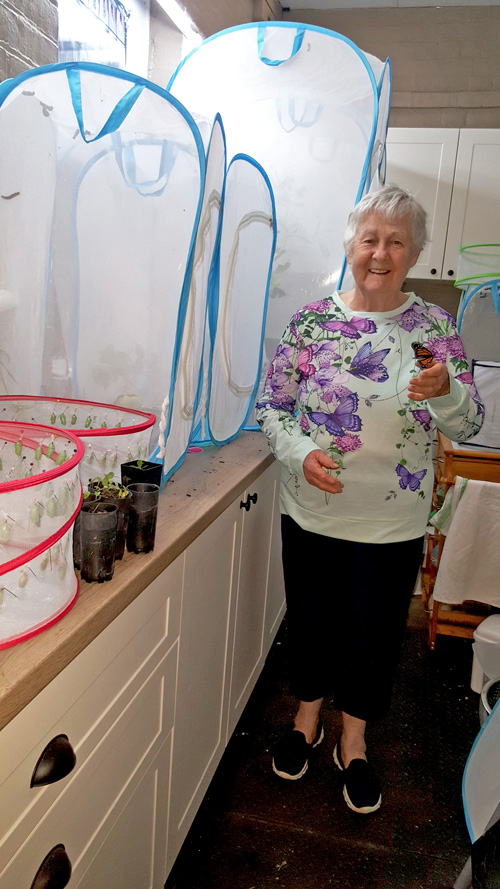The Fantastic Butterflies Museum is coming soon to regional Victoria, in 2025. Our museum will have large scale, realistic models of butterflies and caterpillars, as well as live butterflies in season. We will demonstrate the butterfly lifecycle, cover the history of butterfly discoveries and look at modern science and Lepidopterology (the scientific study of butterflies and moths). The influence of butterflies in art and culture will also be featured. We are working hard to bring about our vision and would appreciate any support that you could give.
Jean and Ellen Reid have been studying and breeding butterflies, for pleasure and conservation, for over 40 years. Our passion for butterflies has led us to developing a butterfly garden and educational museum for the general public.
The top photo is of Jean Reid with a large scale model of endangered butterflies, including the Australian Fritillary (Argynnis hyperbius inconstans) and High Brown Fritillary (Fabriciana adippe) found in the United Kingdom. Their host plants, like many fritillary butterflies, are native violets.
Unique Butterfly Models
These models are created by Jean Reid, our ‘artist in residence’. To achieve their highly realistic and accurate appearance, each butterfly model takes her several months to create from scratch. The models are primarily paper and wire sculptures, with artificial hand coloured fur. It is hoped that the museum will include many more models, including local Victorian butterflies, and other Australian butterflies. We will eventually have a “Butterflies of the World” exhibition, including the most loved butterflies found overseas. These models are not currently for sale.
Caterpillary
The bottom photo shows Ellen Reid in our butterfly breeding laboratory or 'caterpillary'. This is located in a separate room at the rear of the large museum room. We received a grant from the Northern Grampians Shire for the laboratory. Our plan is to expand this laboratory, to enable us to breed larger numbers of Australian butterflies, for conservation purposes.
So far we have successfully reared and released Yellow Admiral (Vanessa itea), Red Spotted Jezebel or Wood White (Delias aganippe), Tailed Emperor (Charaxes sempronius), Meadow Argus (Junonia villida), Caper White (Belenois java), Lesser Wanderer (Danaus petilia), Wanderer or Monarch (Danaus plexippus), Dainty Swallowtail (Papilio anactus), Orchard Swallowtail (Papilio aegeus), Fuscus Swallowtail (Papilio fuscus), Chequered Swallowtail (Papilio demoleus), Varied Eggfly (Hypolimnas bolina), and even the Cabbage White (Pieris rapae - for research purposes) butterflies.
We release butterflies into our butterfly garden, located at the rear of the museum premises. They are free to migrate or patrol our nectar and host plants. No butterflies are kept or sold as pets or specimens. A very small number are used for scientific research purposes, particularly in relation to parasitic wasps and flies.
The caterpillars are reared in entomological cages or sleeves on the live host plant. This is to protect them from predators, including parasitic wasps and flies. It also helps to reduce diseases and infections, particularly in gregarious or grouping caterpillars.


